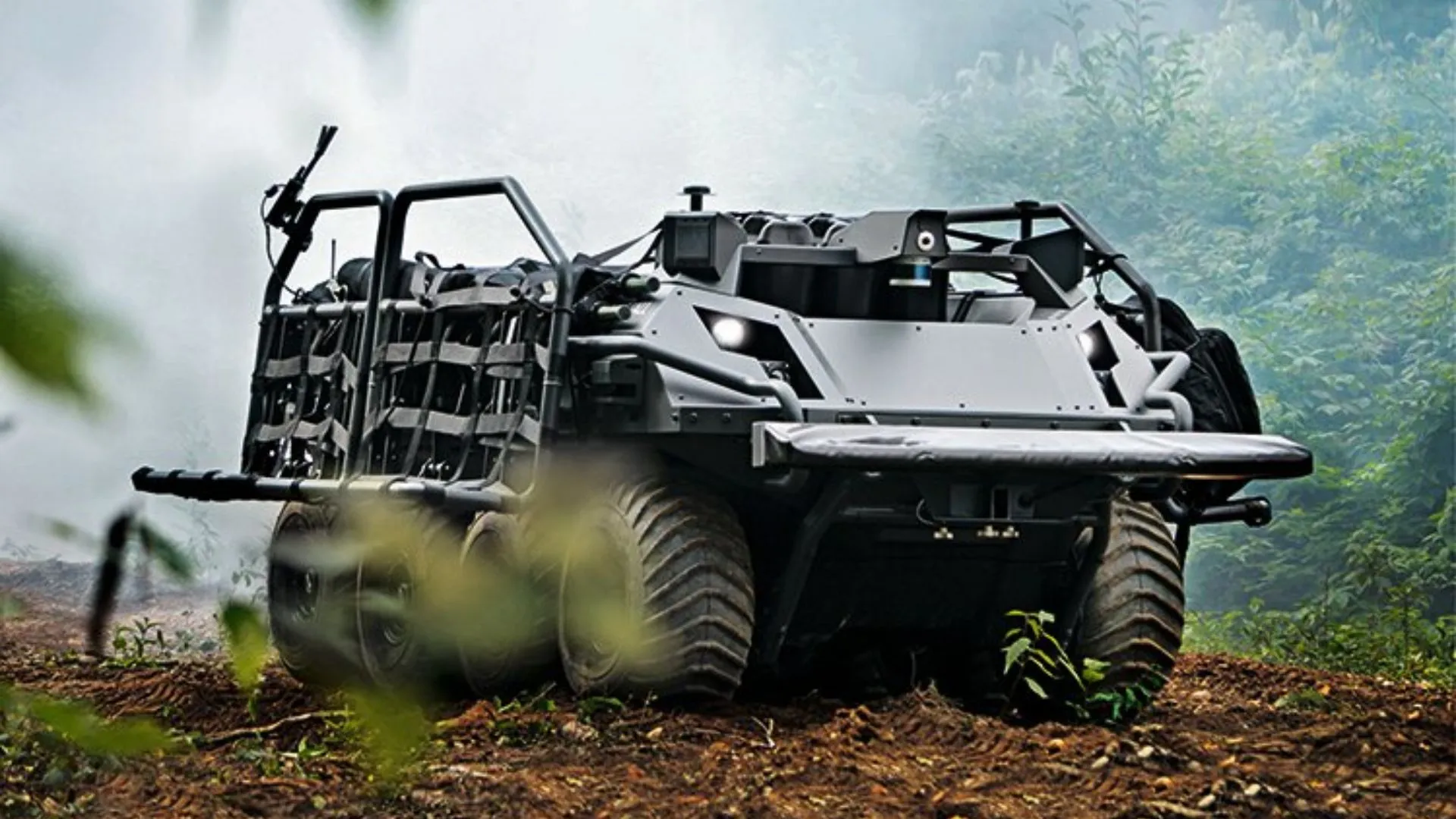
Rheinmetall Canada tested a Mission Master 2.0 unmanned ground vehicle by dropping it from a warship into the Atlantic and driving it to a Portuguese beach.
The trial took place during NATO’s Robotic Experimentation and Prototyping using Unmanned Systems exercise on September 23. The drill gathered 24 countries and evaluated more than 276 unmanned systems for maritime operations.
“[Mission Master 2.0] was embarked on a warship that navigated into challenging waters and was dropped into the sea, with a crane, and its mission was to navigate back to the beach near the testing site effectively,” Rheinmetall Canada’s Director of International Business Development Étienne Rancourt told Defense News.
The successful run showed the UGV could complete a sea-to-shore transit and then operate on land without direct human towing or recovery.
Modular kit for maritime tasks
The amphibious trial used a Mission Master loaded with a partner kit. That included a tethered drone supplied by France’s Elistair, an Echodyne radar from the United States, and Rheinmetall’s mast and sensor package.
The configuration aimed to support scouting, sensing, and communications during an amphibious approach, roles navies and marine units increasingly want from unmanned systems.
Rancourt said the tested vehicle incorporated recent operator feedback. “The version you see here has upgrades based on current operators’ feedback, including the U.S., Norway, the UK, etc. These are mainly all focused on increased robustness and stability of the vehicle,” he said.
Those upgrades target reliability in saltwater conditions and stability when crossing shoreline terrain.
Mission Master family and autonomy
The defense technology company’s Mission Master line covers several UGV sizes and mission sets. The family handles surveillance, logistics, casualty evacuation, communications relay, and fire support.
All models use Rheinmetall’s Path autonomous kit, or A-kit, which enables follow, convoy, and fully autonomous modes to reduce routine tasks for soldiers.
“Rheinmetall is committed to keeping a human in the loop in all kinetic operations, assuring that it is never a machine that decides when to open fire,” the company stated on its website.
“The Path A-kit has an open, flexible architecture, meaning it will rapidly integrate first-hand innovations as artificial intelligence technologies evolve.”
That architecture is intended to let armed forces swap sensors and software without replacing the whole vehicle.
Wider trends and partnered systems
The Portugal exercise highlights a broader interest in unmanned systems that can bridge sea and land. Militaries want robots that scout ahead, gather intelligence on beaches and littoral zones, and carry supplies during complex water-to-shore moves.
Other nations are already fielding amphibious UGVs in combat zones, and multinational exercises are testing which roles make sense for a partnership between surface, aerial, and ground robots.
Rheinmetall also displayed partnered weapons and rapid-response systems during the event. A Hero-120 loitering munition from Uvision, shown alongside the Mission Master, was used in a mock quick reaction scenario.
“We were shortly notified of our mission, and within two minutes of receiving the coordinates of the target, we were set up on the beach to launch and strike it,” a Uvision USA representative said, according to reports..
That demo underlined how sensor-equipped ground robots can feed targeting and launch chains during near-shore operations.



